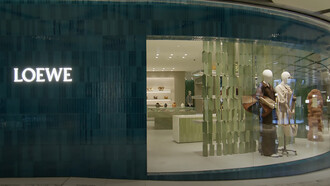This short writing is inspired by two of the greatest contemporary thinkers, Eva Prats and Ricardo Flores, at The Flores & Prats architectural studio.
They withhold a practice that is devoted to preservation, adapting buildings to encourage evolution, which brings forth a conversation between both the past and the present. This duality is meticulously blended by redesigning existing infrastructure to sustain its original sentiment, an acknowledgement of history that is layered with a new creative flare which is bursting with captivating instants and prominent delight.
If we are to learn from this process of creation, we learn that observing requires no interference, to live in the world is to live amongst a vastness of energy, energy that is ours and that of others. It is important to learn how to sustain, as opposed to destroy. It is in this practice that we construct with compassion and recognition of another: another time, other people, other memories.
Humanity has much to learn from this philosophy, accepting what we inherit consents to a deeper understanding of our story and memoir.
In a contemporary drive towards newness, we are witnessing the beauty of revision.
If we continue to encourage only the construction of tall, glass skyscrapers in cities, we will lose the appeal to move towards distinctiveness and eccentricity. We will wipe out the exhilaration found through visual variety because if a building endures its inimitable character, it maintains charm and is not stripped of soul.
Once we acknowledge buildings holding reminiscences of a past which is narrated through their quality of assembly; the materials chosen, and the colours present, all of which are laden with memories of the uses and lives that have inhabited them. It is in this learning; we will understand the danger we have inflicted in stripping the land of what was for what should be.
It is fundamental that architects acknowledge their role in nourishing memories held in spaces and through this consideration, they will move towards a future that values the past.
In the La Biennale di Venezia, Flores & Prats brought with them incomplete drawings, models, and documents showcasing uncertainties and contemplations, all indulged on tables to provoke the exchange of vulnerability. The viewer looks at process, not product; we are witnessing the depth of deliberation and reflection engaged to harvest output. The output in this instance is not the product, it is the wholeness of the narrative; it is the story.
This is truly an inspiring act.
One that favours authenticity.
Offers sanctuary.
Cities filled with dull buildings are perhaps a sign of our time. It was an unfortunate time.
The health of the earth and our community are likely in danger.
If we are to erect buildings that are neither respected nor treasured, lacking monuments and originality, we risk generating a surplus of structures that, in the future, will be carelessly removed without reluctance because they are neither desired nor precious, which means that no one will be an advocate.
Instead, we should be crafting buildings that catalyse joy and inspire, with that will positively inform our behaviours, by withholding an acknowledgement of the importance of craft for centuries.
We, as humans, are highly attuned to our environment.
Our feelings and our health relate to the buildings, the images we see day-to-day.
Everything is connected.
The way we construct the interiors of our homes is to reflect the ephemera that creates solitude and safety within our resting place. It is in this undertaking that we can understand the potential for this level of profound thought, and when it is not embraced through the exterior of our homes; by the architects, designers, builders, and engineers, we will continue to see history and magnetism removed.
We may become detached from the peace that the earth has always offered.















